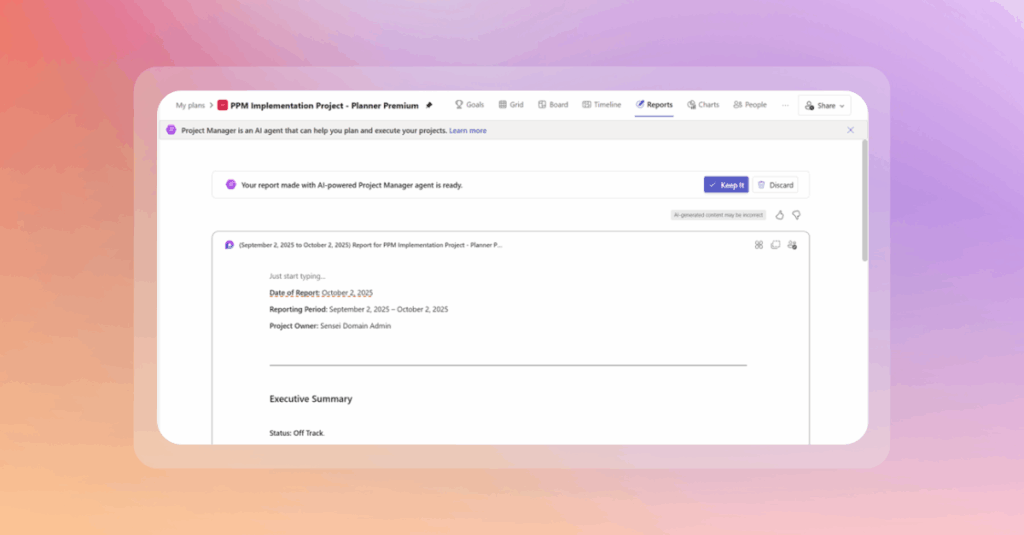Now, “Agile” (insert a level of contention here) is often just a buzzword thrown around with a lot of assumptions made, without much thought, frequently leading to failed outcomes. Which is what has prompted me to share my personal experience on The Pitfalls of Thinking Your Organisation’s Software Implementation is Agile.
Agile, as noted above is a word we hear often. But here’s what it’s not:
- A lack of governance – In fact, if you’re truly Agile, you likely need stronger controls to keep up with the speed of change.
- A lack of documentation – Because the pitfalls don’t usually appear in the moment. They show up 3, 6, 12 months – or even years down the track when stakeholders have changed and context or history is needed. Especially when reflecting on measurable outcomes or benefits.
- Chaos – Agile doesn’t mean constant change within your sprints or something new every week. It requires a firm hand on coverage and control to prioritise and stay focused on your vision and must-haves.
- An open-ended timeframe and budget – You don’t want to get stuck in an infinite loop of change, constantly pushing your Go Live to the right.
Agile is great, but in my experience, it should be approached with caution, especially if you have a capped budget. In these cases, you’re probably operating in a hybrid delivery model, where requirements and prioritisation are done upfront to produce a delivery estimate. While you may not be “Agile” in the purest sense, you’re likely using Agile methods within the delivery stream to allow emergent design, and that’s often the secret sauce. It gives you the flexibility of Agile while avoiding the rigidity often experienced in Waterfall.
Whether Agile, Waterfall or Hybrid, consider a budget allocation for change and the unforeseen. From experience there’s often more scope or duration impact than initially estimated. One common pitfall we see is clients setting overly aggressive timelines which results in the need to extend the overall project duration and overall budget. If your vendor challenges you on timelines upfront, they’re often doing the right thing. If this is offered lean into their extensive experience and seek to understand the why, as they often know how to scale effectively due to experience. Building in realistic buffers and listening to delivery partners early can save significant pain later.
With all this in mind, when change inevitably arises, don’t lose sight of the original vision that shaped your projects foundation. If you’re pivoting only weeks or months into a project, take a pause and ask yourself, “Are we still aligned to our original goal?”. A change or contingency budget shouldn’t be for significant new or missed scope. It should cover minor gaps or high-priority new scope that delivers measurable value to your end users. What about a major miss? Well, if you’ve kept yourself honest and aren’t getting sidetracked by the loudest voices in the room, and the change is grounded and strategic in nature, that’s where change controls come into play. For large projects, your Steering Committee should be consulted to assess the impact on time, cost, and end users. Ask questions like, “Is it critical for Day 1, or can it be deferred to Phase 2?”. Be honest and neutral in your assessment, bias can easily creep in. My advice, avoid overcomplicating the system until your users have at least experienced using it. As someone who works in the vendor space, I get it, misses happen, and they should be considered but always within context of the situation. What we don’t want to see is a project unpicking Phase 1 items in Phase 2.
Tracking: In my experience, the best approach is to use tools like ADO or JIRA for sprint delivery and maintain a robust schedule to track tasks that aren’t sprint-specific (e.g. project management, training, Go Live readiness, hypercare). This reduces noise and keeps the build focused. Use a PPM tool for RAID and status reporting. Remember that approach with caution comment: This is often where agile projects become unstuck. How many times have you heard, “It’s agile, documentation isn’t required?” or had citizen project managers escalate issues because risks weren’t proactively documented and mitigated? My advice don’t overlook Project Management tracking fundamentals, there’s a reason they exist and why almost every organisation uses them. If you’re still using Excel for RAID logs or other tracking purposes, I highly recommend exploring new technology. It’s a game changer to have visibility across all your projects, programs, and portfolios in one place. Blend this with your knowledge, training, and experience from similar engagements, and manage your stakeholders and relationships – you’ll be well equipped to tackle any implementation.
No matter the methodology, don’t lose sight of stage gates and compliance. These are fundamental checkpoints to continuously check and measure the temperature of your projects. There are of course no perfect projects, but if you can find the sweet spot of quick user feedback blended with the right level of governance (remembering to tailor for size and complexity), you’ll be off to a strong start.
To bring this all together, a high impact move for any implementation, is to partner with a vendor (both software and change, if you don’t have an internal change management team) who is transparent and upfront. Somone who’s open about the pitfalls and risks of similar implementations, and not only surfaces them early, but actively helps you navigate through them. A trusted advisor who can create clarity in the chaos – balancing the discipline of governance (tools) with the nuance of key decision making (people), while tailoring the approach and methodology (process) to suit both your organisation and their (vendors) strengths, all while having a vested interest in your success.
In summary, Agile, like other methodologies, absolutely has its place. But my advice, don’t get caught up in the theory, buzzwords, or rigidity of one process. Find your rhythm and take what works best from each approach. As a Project Manager and someone working in the delivery space, be people-over-process centric, but don’t forget the delicate dance of blending your organisation’s approach and due diligence with one that works for your client and the overall project. If you stay focused on outcomes and balance this with the right level of governance rigour, things will almost always fall into place.
Want to learn more, get in touch with us today!




